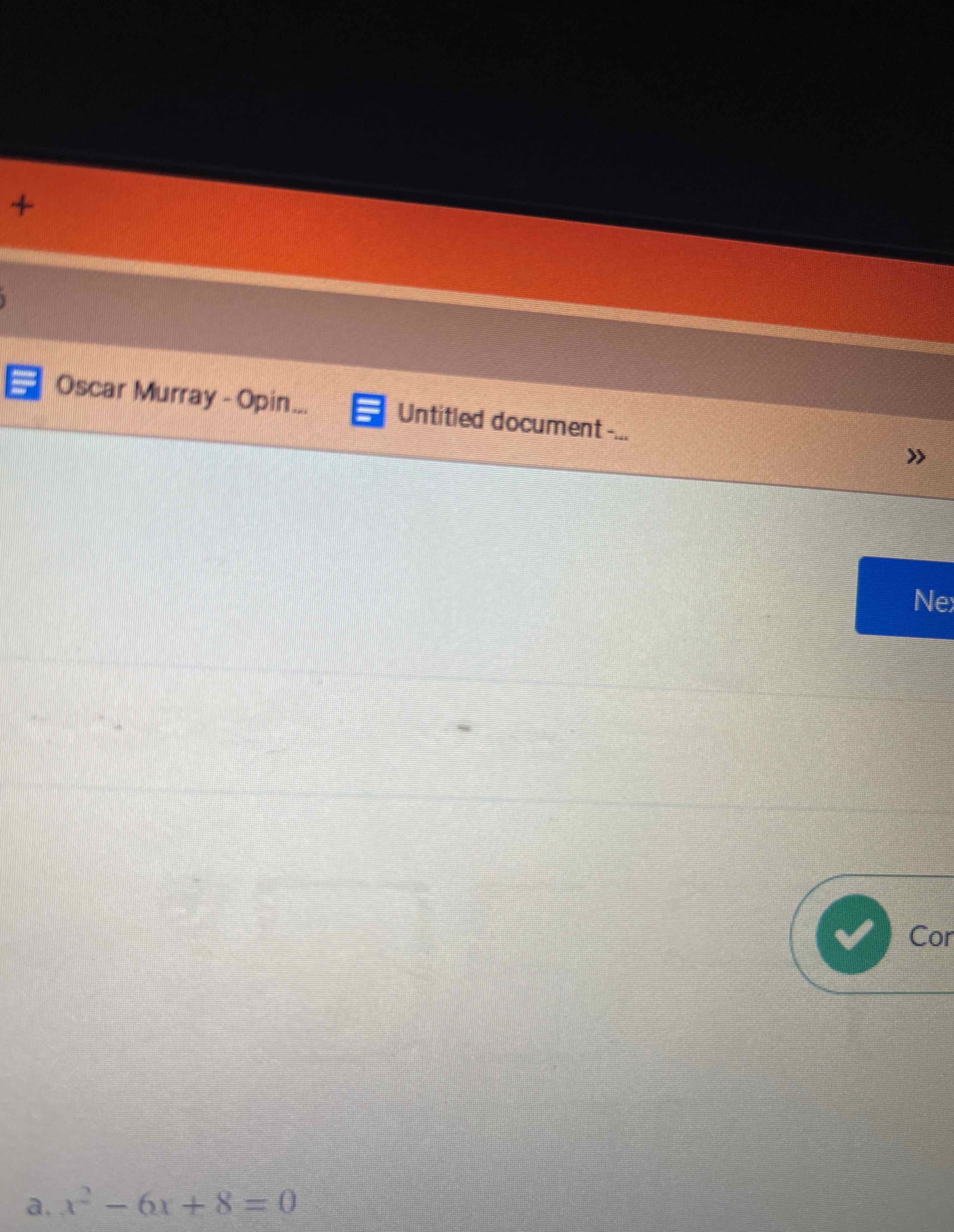AI tutor
Full solution
Q. a.
- Identify coefficients: Identify the coefficients of the quadratic equation . Here, , , and .
- Use quadratic formula: Use the quadratic formula to find the roots. Substitute , , and into the formula.
- Calculate discriminant: Calculate the discriminant: .
- Substitute values: Substitute the values into the quadratic formula: .
- Solve for x: Solve for x: and .

